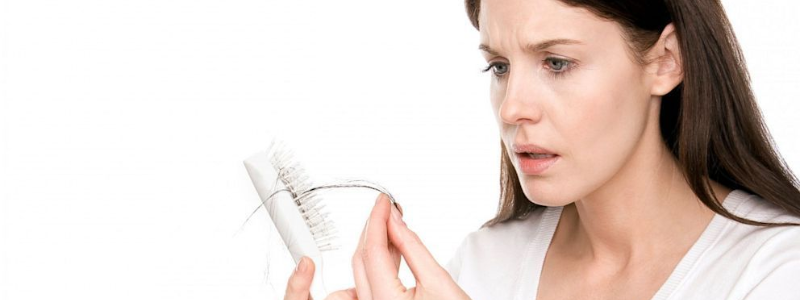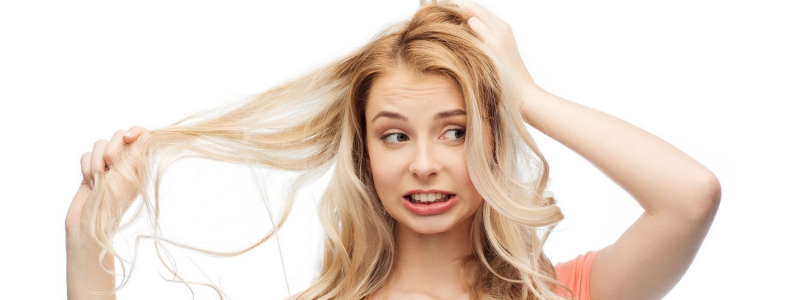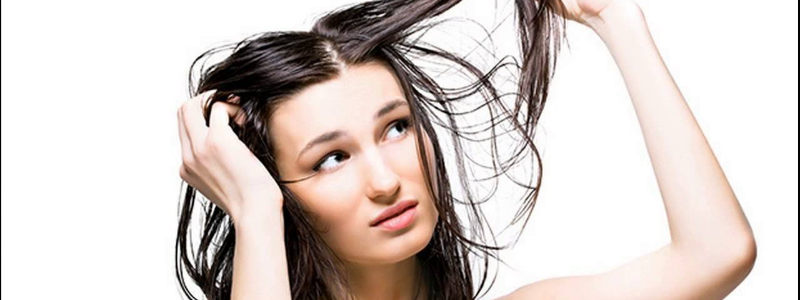5 Common Scalp Problems and How to Treat Them
The scalp is often ignored when it comes to hair care, especially since we usually focus on our lengths and ends – but its health can be the key to over-all optimal hair health. Read on to find out more about the five most common scalp problems and how to treat them:
Flakes
Dandruff is very common, but it’s actually not your fault.
According to Robyn Gmyrek, MD, a dermatologist at Union Square Laser Dermatology in New York City, “An oily scalp can lead to overgrowth of a yeast that naturally occurs on the skin. That can lead to inflammation and flaking.”
Another cause could be seborrheic dermatitis, a condition triggered by stress or cold weather.
Use a shampoo with keratolytic ingredients like pyrithione zinc to help remove flakes and dead skin cells. Pyrithione zinc also “helps reduce levels of yeast on the skin” according to Joshua Zeichner, MD, dermatologist and director of cosmetic and clinical research in dermatology at Mount Sinai Hospital, New York City.
Dr. Gmyrek adds that “More frequent washing decreases oil and removes scales, flakes, and debris.”
Hair Loss
Hormonal changes, stress, and/or genetics could cause hair loss.
First figure out the cause. Start with a clean brush, then count all the strands you find in it every day. While anything under 100 is normal, anything above 500 requires a check-up.
Next, inspect the hair strands closely. Dr. Gmyrek says that if the strands are broken and have no bulb at the end, the damage is caused by “heat, coloring, and processing.” Avoid said procedures for a week, then do another hair count to check for improvements.
If you notice bulbs at the ends of your strands, your hair loss may be genetic or hormonal. Try applying a topical formula containing minoxidil.
Damaged Hair
Hair damage can be caused by heating tools, bleach, dyes, the climate, and even poor scalp health, leading to inflammation.
Treat your scalp by rubbing shampoo into it with your fingertips, letting it sit for a few minutes, then thoroughly rinsing it off. Choose shampoos with active ingredients like pyrithione zinc or with soothing, moisturizing properties, to help calm inflammation.
A Tight Sensation
Dryness, inflammation, and even dry shampoo can cause scalp discomfort.
Dr. Gmyrek explains that since the skin is already tight in the scalp area, “When additional inflammation or swelling occurs, it’s perceived as tightness.”
If you don’t have dandruff, minimize your use of dry shampoo. Dry shampoo does not remove dead skin cells and dries out the scalp by absorbing oil, causing the scalp to become too dry and tight. Use dry shampoo only when you really need it, and properly rinse your hair as soon as you can.
Excessive Scalp Oiliness
Hormonal changes and/or genetics may be the reason your scalp feels greasy.
Avoid oil-heavy styling products, and if you ever use them, minimize the application to your hair shaft only. Wash your hair more frequently, and make sure to massage your scalp using your fingertips to remove product residue.
Source: Refinery29










